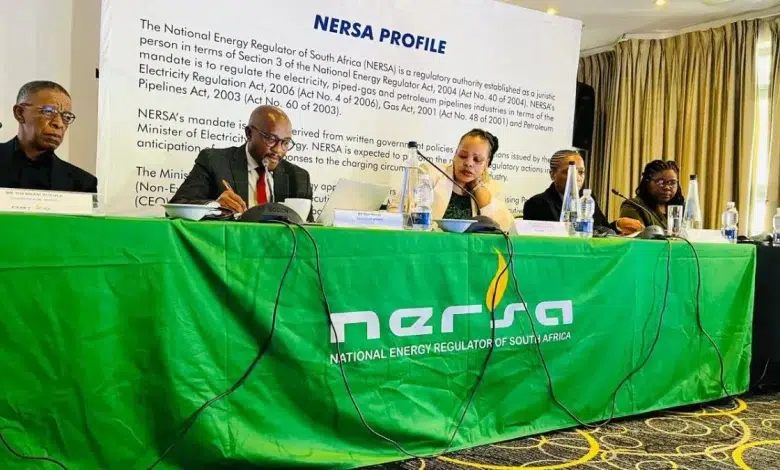South Africans Warned of Possible Tariff Hikes After Eskom’s R54bn NERSA Settlement

Electricity users in South Africa may face higher costs after Eskom and the National Energy Regulator of South Africa (NERSA) reached a significant financial settlement. The two parties agreed on a R54 billion settlement stemming from errors in NERSA’s electricity price calculations. This development has important implications for consumers and the country’s energy future.
RELEVANT ARTICLE: Eskom Reaches 100-Day Streak Without Load Shedding — Will It Continue?
Table of contents
- What Led to the Settlement?
- Understanding NERSA’s Role
- What Are Electricity Tariffs and How Do They Work?
- Why This Settlement Matters
- Impact on South African Households
- Eskom’s Financial Struggles Continue
- NERSA Settlement: Criticism from Opposition and Unions
- What Does the NERSA Settlement Mean for Energy Regulation?
- Moving Towards Sustainable Energy Solutions
- Tariff Hike: What South Africans Should Know
- Energy Supply
What Led to the Settlement?
NERSA had initially set electricity tariffs under the Sixth Multi-Year Price Determination (MYPD6). Eskom challenged these calculations through a judicial review process, arguing they were incorrect. Following this legal action, NERSA admitted mistakes in its methodology. As a result, on 30 July 2025, Eskom and NERSA settled the dispute for R54 billion. This settlement represents an adjustment for tariffs initially set too low.

Understanding NERSA’s Role
NERSA is the regulatory body responsible for approving electricity tariffs in South Africa. It aims to balance fair prices for consumers with Eskom’s need to cover costs and invest in infrastructure. Mistakes in tariff calculations can have serious effects on Eskom’s financial health and service delivery as well as on electricity prices paid by consumers.
Following an assessment of Eskom’s review application, NERSA identified errors that resulted in
underestimation in certain components of Eskom’s application, specifically an error on the depreciation
amount captured in Table 14 of the decision and reasons for decision document compared to Table 1 of the RAB section. Consequently, this resulted in a shortfall of R14 514 million. The other error relates to an asset transferred for commercial operation, where the cumulative balance principle (rolling forward) was not applied for the generation business, which affected the 2026/27 and 2027/28 financial years.Notwithstanding this error, it must be stated that the cumulative balances principle was properly applied for transmission and distribution businesses. After rectifying these errors, NERSA concluded that Eskom was entitled to an additional R54 billion over the three-year MYPD6 period, an amount substantially lower than Eskom’s original claim of R107 billion. The parties settled for R54 billion on 30 July 2025.
What Are Electricity Tariffs and How Do They Work?
Electricity tariffs are the prices people pay for using electricity. They cover the costs of producing and delivering power to homes and businesses, including generation, transmission, distribution, and maintenance of the network.
South African tariffs include a fixed connection charge and a variable charge based on consumption measured in kilowatt-hours (kWh). Some tariffs feature time-of-use rates, charging less during off-peak hours to encourage usage when demand is low. Others have tiered rates, increasing prices as usage rises to promote energy saving.
Different user groups such as households, businesses, or rural customers have distinct tariff structures. Many South Africans receive electricity either directly from Eskom or through municipalities, which may add additional distribution charges. NERSA sets tariffs to balance affordable prices with Eskom’s need to cover operational costs and investments.
With electricity prices rising again, every saving counts. Explore smart strategies to cut down your power usage and keep your monthly bills under control. Municipal Tariff Hikes: How to Save on Your Electricity Bill in 2025. Click here to learn more.
Why This Settlement Matters
The R54 billion settlement is significant for several reasons:
- It highlights the scale of errors in tariff setting.
- It signals potential future increases in electricity tariffs.
- It draws attention to Eskom’s ongoing financial challenges.
- It raises questions about regulatory oversight and accountability.
Impact on South African Households
Consumers may see electricity prices rise as Eskom needs to recover the settlement cost. Increased tariffs could strain household budgets. For many South Africans, electricity is a vital service, making affordability a key concern. This underlines the importance of accurate and transparent regulatory processes.
Power cuts continue to disrupt operations, reduce productivity, and strain profitability. Discover how small businesses are coping and adapting to keep their doors open. How Load Shedding Impacts Small Businesses in Gauteng. Click to find out more.
Eskom’s Financial Struggles Continue
Eskom has faced financial difficulties for years, caused by aging infrastructure, costly maintenance, and operational inefficiencies. The recent settlement adds further pressure on its finances. Eskom requires adequate funding to maintain and upgrade its power generation and distribution systems to ensure reliable electricity supply.
NERSA’s settlement confirms that electricity prices will rise above inflation for two consecutive years, with tariff increases now set to reach:
• 8.76% in 2026/27 (up from 5.36%)
• 8.83% in 2027/28 (up from 6.19%)
NERSA Settlement: Criticism from Opposition and Unions
Political parties and labour unions have criticised the settlement and the way the tariff errors were handled. They call for greater transparency and accountability from both Eskom and NERSA. Some argue the settlement reflects broader problems with South Africa’s energy policy and management.
What Does the NERSA Settlement Mean for Energy Regulation?
NERSA acknowledged the tariff errors but, due to the judicial review’s legal framework, cannot revisit the issue. This limits the regulator’s options moving forward while Eskom must absorb the financial impact. The case highlights challenges in balancing regulatory duties with Eskom’s financial needs and consumer protection.
Moving Towards Sustainable Energy Solutions
South Africa’s energy future depends on addressing Eskom’s financial issues and modernising the grid. Expanding renewable energy projects and improving energy efficiency are priorities. Reforming the regulatory environment will also play a vital role in preventing similar issues and ensuring fair tariffs.
Tariff Hike: What South Africans Should Know
Electricity tariffs may rise to cover the R54 billion settlement cost. Consumers can stay informed by following updates from Eskom and NERSA. Energy-saving practices can help reduce electricity bills. Staying aware of energy policies and participating in public discussions is important for all citizens.
Energy Supply
The Eskom-NERSA settlement is a reminder of the complexities of managing the country’s electricity sector. Transparent regulation, improved governance, and sustainable investments are crucial to secure South Africa’s energy future. The coming months will show how these changes affect electricity users nationwide.




